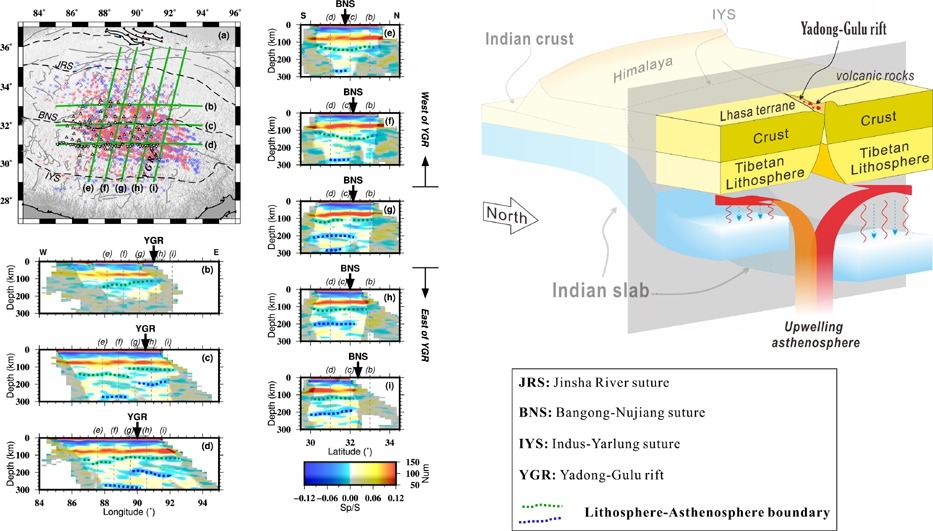EPSL:Complex structure of upper mantle beneath the Yadong-Gulu rift in Tibet revealed by S-to-P converted waves
Abstract
The convergence between the Indian and Eurasian plates has produced the thick crust and uplifted the Tibetan plateau since about 50 Ma. However, the deformation of the mantle lithosphere is still a puzzle. The geometry of the subducting Indian mantle lithosphere beneath the plateau and the thickening or/and delamination of the Tibetan mantle lithosphere are the keys for understanding the continental collision process and the evolution of the plateau. However, knowledge has been restricted due to sparse data coverage in Tibet. In this study, S-wave receiver functions are calculated using tele-seismic waveforms recorded by two broadband arrays in central Tibet to image the lithospheric structure, mainly the depth variation of the lithosphere-asthenosphere boundary (LAB). Our results show that the depth of the Tibetan LAB decreases from ~150 km in the west to ~120 km in the east across the north-south trending Yadong-Gulu rift. Similarly, the LAB depth of the subducting Indian slab decreases from ~270 km in the west to ~200 km in the east, and the northernmost subducting Indian slab can be observed beneath the Bangong-Nujiang suture. These observations suggest that the thickness of the Tibetan lithosphere and the depth of the underlying Indian slab are segmented across the Yadong-Gulu rift in different degrees. The abrupt changes imply that the subducting Indian slab has been torn, which provided an upwelling channel for the asthenosphere contributing to the development of the rift.

.png)
